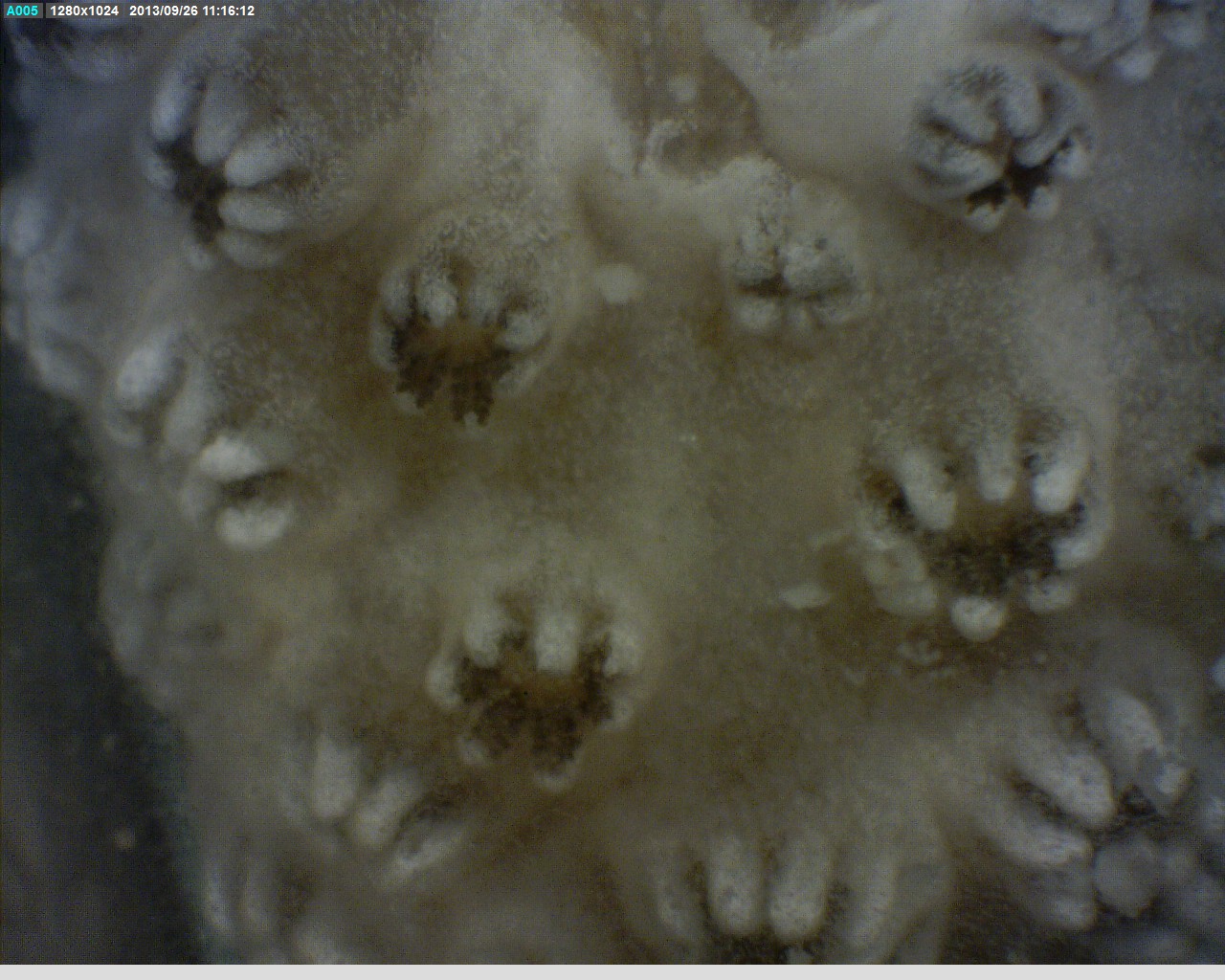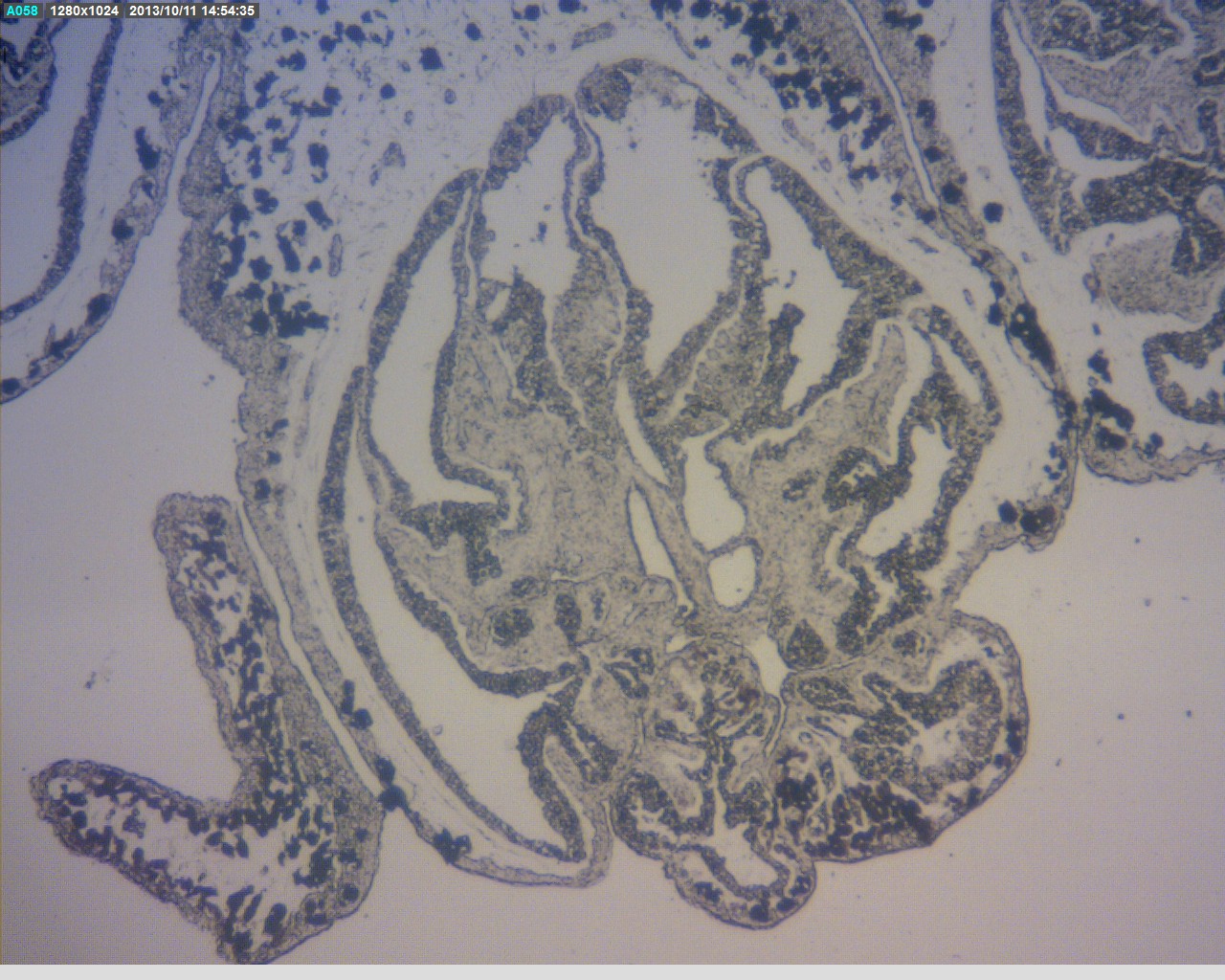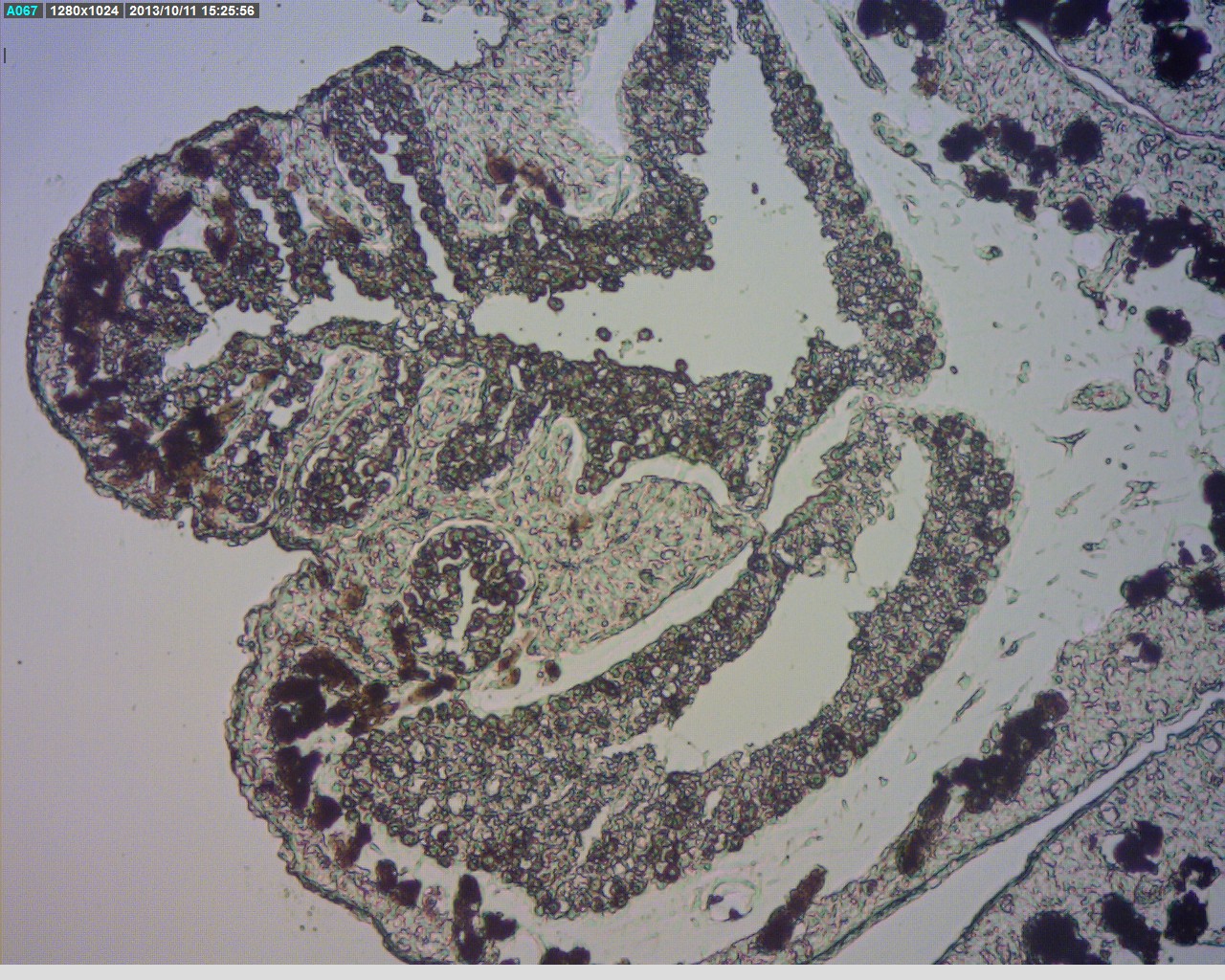Anatomy & Physiology
Polyp anatomy
Picture below shows a close up picture of a branch of the colony with open polyps.

Majority of soft corals have the autozooid type of polyp (Fabricius & Alderslade 2001). It is responsible for capturing food and reproduction. The other type of polyp is the siphonozooid which functions to irrigate colonies with seawater and transport dissolved and tiny food particles suspended in the water column (Fabricius & Alderslade 2001). The soft coral polyp varies from the hard corals by the absence of solid limestone skeleton which is replaced by limestone crystal structures known as sclerites that are embedded in the tissues (Fabricius & Alderslade 2001). Besides that, the structure of the soft coral polyp is similar to hard corals, however they have eight fringed tentacles which identifies them as a soft coral (shown in the picture below). The polyps of C. pachyclados are retractile and minute. They have very short bodies and are monomorphic. The tentacle tips tend to bend backwards to create an inverse bowl shape when expanded (Fabricius & Alderslade 2001).

The picture below shows a cross section of the C. pachyclados polyp. The little black dots signify zooxanthellae embedded in the polyp. This picture also clearly shows the presence of eight fringed tentacles in C. pachyclados.

A closer look at the dense concentration of zooxanthellae embedded in the polyps. The presence of zooxanthellae gives rise to the brownish colour of the polyps.

One of the interesting characteristics of the C. pachyclados is the ability of the polyps to close up instantaneously upon disturbance. However, as discussed in the forced spawning experiment, the incorporation of potassium chloride into the environment of the colony has disabled the polyps to close immediately as opposed to those without the presence of potassium chloride. As demonstrated by Horridge (1956), excess potassium ions in the living environment of the colony are capable to slow the tentacles responses and decrease the sensitivity of the colony to any contact. The video below shows the response of polyps to excess introduction of potassium ions into the environment as opposed to the colony without potassium incorporation respectively.
|